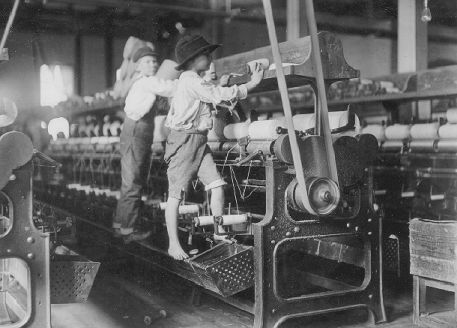Children in the Victorian Era were often forced to work almost as soon as they could walk. This was not something new to the Victorian period as children had always been expected to work for hundreds of years. Many were used as cheap labor. Children worked very long hours with little breaks and no fresh air.

Working Conditions of Victorian Children in Factories
They often worked in very dangerous conditions resulting in injuries or even death. Very young children were expected to work. There was no education for the poor, so it was very unlikely they could get better-paid jobs when they were older. Children were paid very little because they were young. Most children had no choice because they needed to work to help their families earn enough money to live.
The lucky children got apprenticed in a trade, the less lucky ones worked on farms or helped with the spinning. When new types of work appeared with the development of industries and factories, it seemed perfectly natural to use children for work that adults couldn’t do like crawling underneath machinery or sitting in coal mines to open and close the ventilation doors.
Working Hazards for Victorian Children
Children worked long hours and sometimes had to carry out some dangerous jobs working in factories. In textile mills, children were made to clean machines while the machines were kept running and there were many accidents. Many children lost fingers in the machinery and some were killed, crushed by the huge machines. In match factories, children were employed to dip matches into a dangerous chemical called phosphorous.
The phosphorous could cause their teeth to rot and some died from the effect of breathing it into their lungs. Another job children could do better than adults was chimney sweeping. The young boys would be forced to climb the narrow dirty chimneys to clean out the soot. However, in 1832 the use of boys for sweeping chimneys was forbidden by law, but, boys continued to be forced through the narrow winding passages of chimneys in large houses.
Other jobs included working down coal mines. Coal was the main source of power in Victorian times. It was used for cooking and heating, and for driving machinery, trains and steam ships. Until the 1840s, children as young as five worked down mines for up to 12 hours a day.
There were several reasons as to why the children were employed to work in factories.
Some of the reasons were:
Children were much cheaper than adults as a factory owner did not have to pay them as much.
There were plenty of children in orphanages, so they could be replaced easily if accidents did occur.
Children were small enough to crawl under machinery to tie up broken threads.
Young children stopped working in textile factories in 1833 when the Factory Act was made law. It was now illegal for children under 9 to be employed in textile factories.